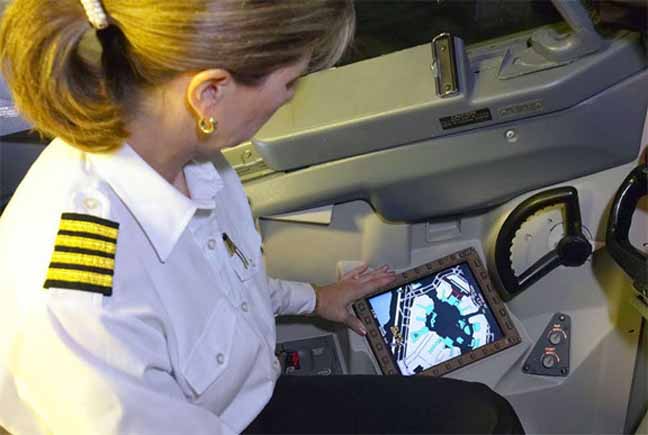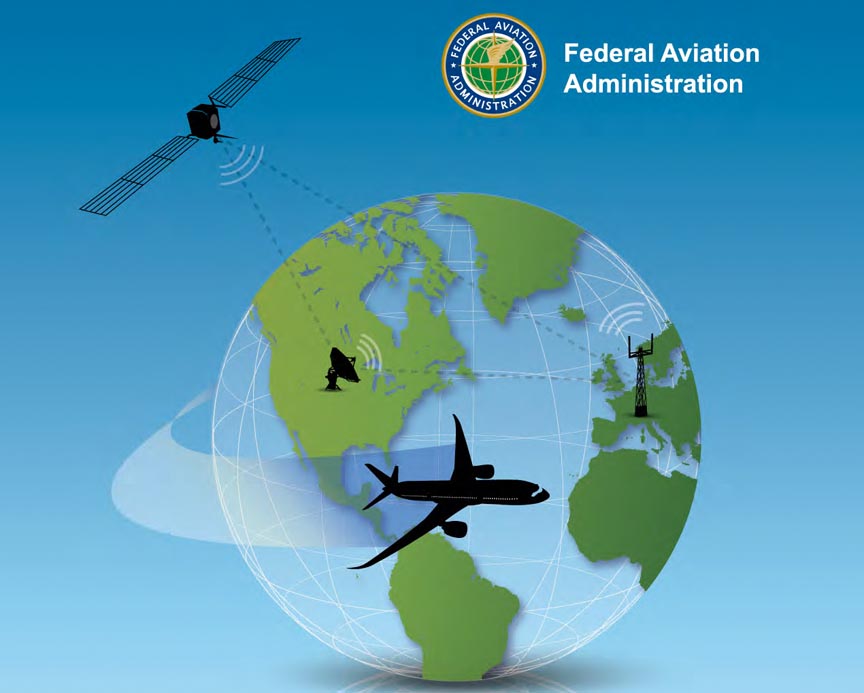Safety and cost reasons led U.S. aviation regulators to choose a somewhat less efficient system for oceanic air traffic control, government watchdogs told Congress, adding that the majority of the airlines the researchers surveyed agreed with that approach.
The chairman and the ranking member of the House Committee on Transportation tasked the Government Accountability Office (GAO) with evaluating choices being made regarding improvements in aircraft surveillance technology. They wanted to know if recent advances could be used for safer and more efficient air traffic across the 24 million miles of oceanic airspace for which the U.S. provides air traffic control service.
The Federal Aviation Administration (FAA) provides that service across four regions—the Anchorage Arctic, Anchorage Oceanic, New York Oceanic, and Oakland Oceanic—spanning parts of the Atlantic, Pacific and Arctic oceans. The service is based on internationally agreed-to stands and practices developed through the International Civil Aviation Organization (ICAO). ICAO has updated its guidelines to take advantage of Automatic Dependent Surveillance-Broadcast (ADS-B) and Automatic Dependent Surveillance-Contract (ADS-C), allowing properly equipped planes to fly closer to each other and fly more efficient routes.
With ADS-B, properly equipped planes use GPS signals to derive their position and broadcast it and other information like altitude to other aircraft and ground-based air traffic control facilities. This system, plus ground-based radar, give air traffic controllers the ability to “see” in near real time where all the aircraft are. That ground system and radar are not available over the ocean, however, reducing surveillance and requiring that a radio operator relay the plane’s information.
ADS-C uses a satellite to convey the information. The planes’ position and other information are relayed to the satellite, which relays it to a ground station that sends it to air traffic control. This sort of update can happen roughly every three minutes. In the case of ADS-C the air traffic controller can also send a message to the pilots. ADS-B broadcasts can also be relayed by satellite but there is no two-way functionality.
Planes equipped with ADS-B or ADS-C would be able to fly closer together than the current ICAO standard of 23 nautical miles lateral and 30 nautical miles longitudinal. ICAO has said aircraft using space-based ADS-B could potentially be eligible to use minimum separation standards of 19 nautical miles lateral and 17 nautical miles longitudinal while aircraft using enhanced ADS-C could potentially be eligible to use a minimum separation standard of 23 nautical miles lateral and 20 nautical miles longitudinal.
The FAA did a cost benefit analysis on the upgrades and service costs for ADS-C and space-based ADS-B and found that ADS-C with enhanced surveillance technology was far more cost effective, GAO said. The agency plans to implement this and new separation standards. “Specifically,” the GAO wrote, “FAA will begin operational use of the 23 nautical mile lateral separation standard in U.S. oceanic airspace in 2021 and the 20 nautical mile longitudinal separation standard in 2022.”
For Safety Reasons
Safety was also a factor in the choice. FAA officials told GAO that the operational considerations for most of the U.S. oceanic airspace were not reflected in the data used by ICAO to model the safety of these. For example, the ICAO panel responsible for analyzing the safety of the proposed minimum separation standards used data from the North Atlantic on the number of times aircraft deviate without authorization from their expected flight plan due to weather conditions. According to FAA officials, other oceanic regions—especially in U.S. oceanic airspace—experience a higher frequency of these deviations. “As a result,” GAO said, “FAA officials do not plan to use the new minimum separation standards enabled by space-based ADS-B (i.e., 19 nautical miles lateral and 17 nautical miles longitudinal) until FAA can further address how to implement these standards in U.S. oceanic airspace.”
U.S. regulators were also concerned because the Advanced Technologies and Oceanic Procedures (ATOP)—the flight data processing system that controllers use at their workstations—was designed to use the information in ADS-C position reports, like current location and the next waypoint in the flight, to determine potential conflicts in aircraft flight paths. Without this information, ATOP would not receive the data it uses to detect conflicts within the next 2 hours of a flight, according to FAA officials. ADS-B messages do not include this information and therefore, space-based ADS-B would not replace ADS-C in U.S. oceanic airspace, GAO said. The FAA does plan to review and evaluate the use of space-based ADS-B over the next 5 or more years.
Eleven of the 14 selected airlines interviewed and surveyed by GAO supported FAA’s approach of pursuing enhanced ADS-C and adopting new minimum oceanic separation standards of 23 nautical miles lateral and 20 nautical miles longitudinal in the near term. Twelve of the 14 also supported the continued evaluation of space-based ADS-B in oceanic airspace.
“Of those selected airlines that did not support FAA’s approach,” GAO said, “the reasons included concern that using enhanced surveillance technologies will increase operator costs with no clear benefits and that FAA is prioritizing enhanced ADS-C over space-based ADS-B despite the safety and technological advances the latter would enable.”






